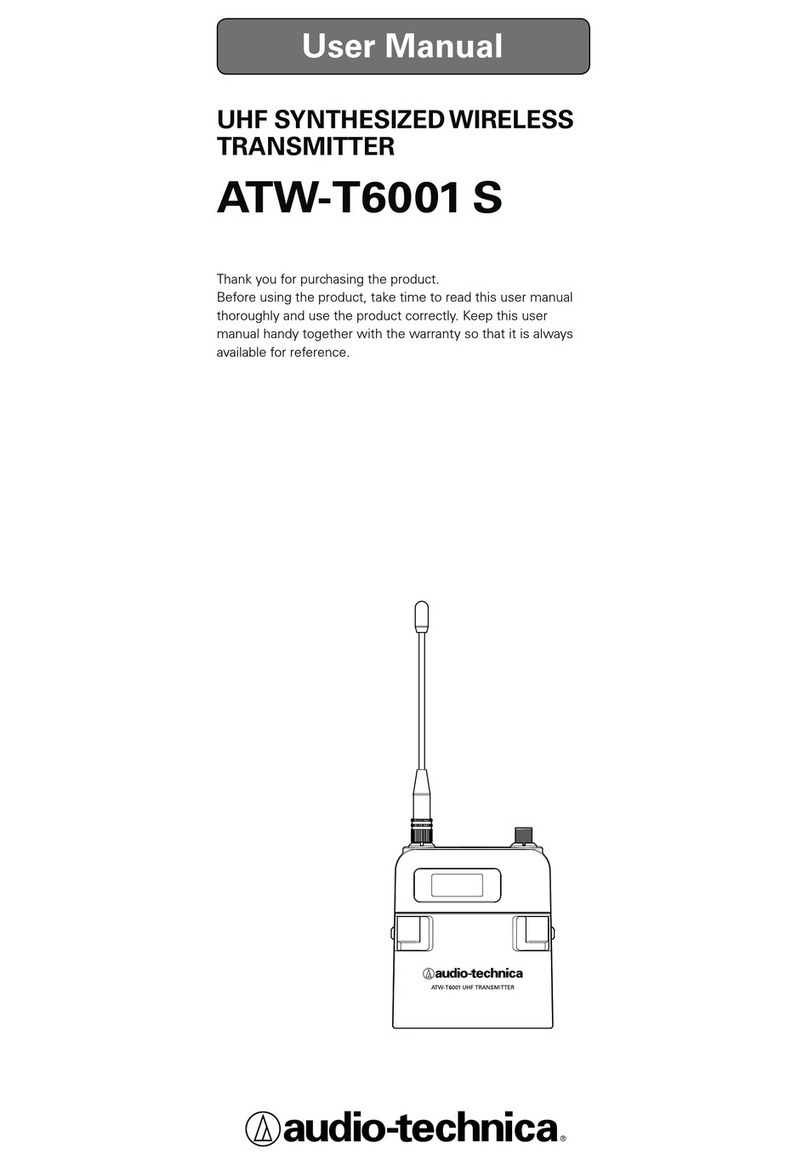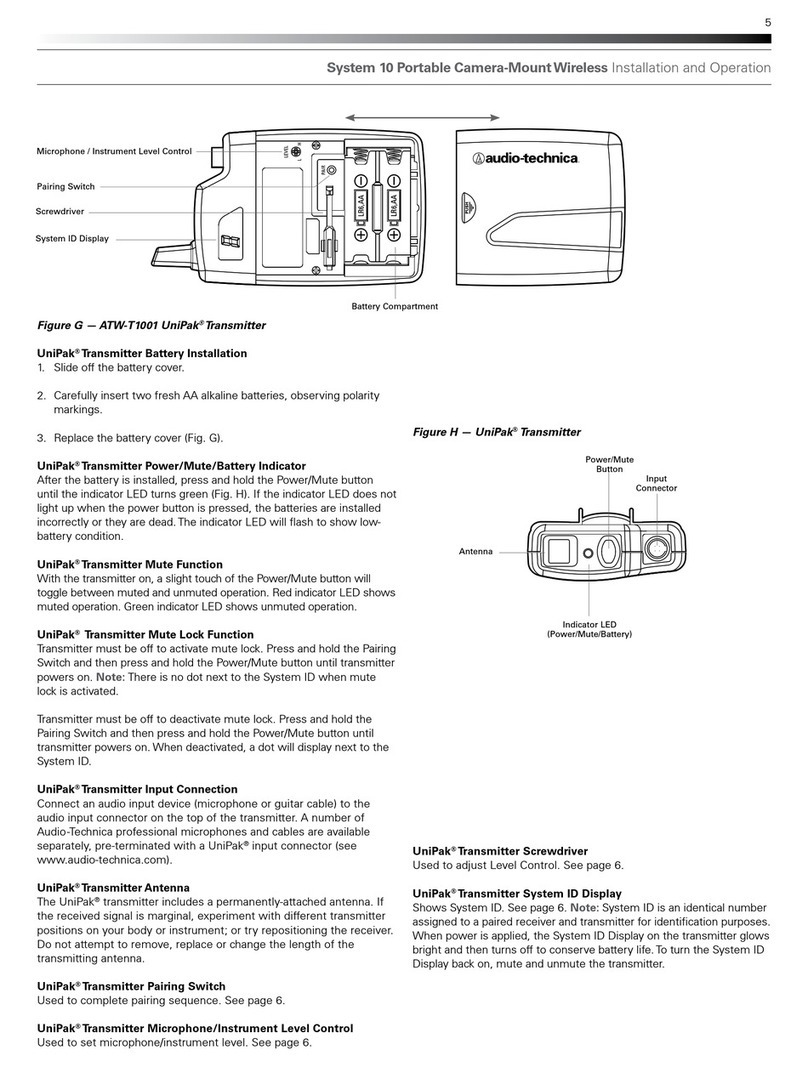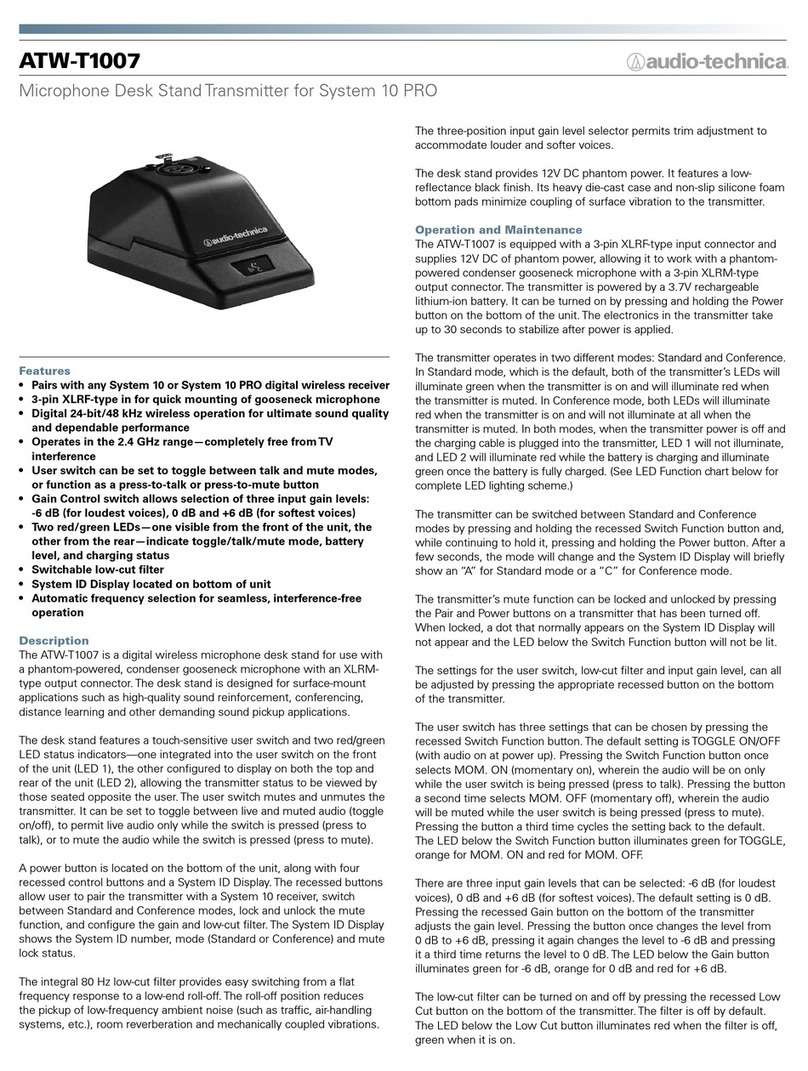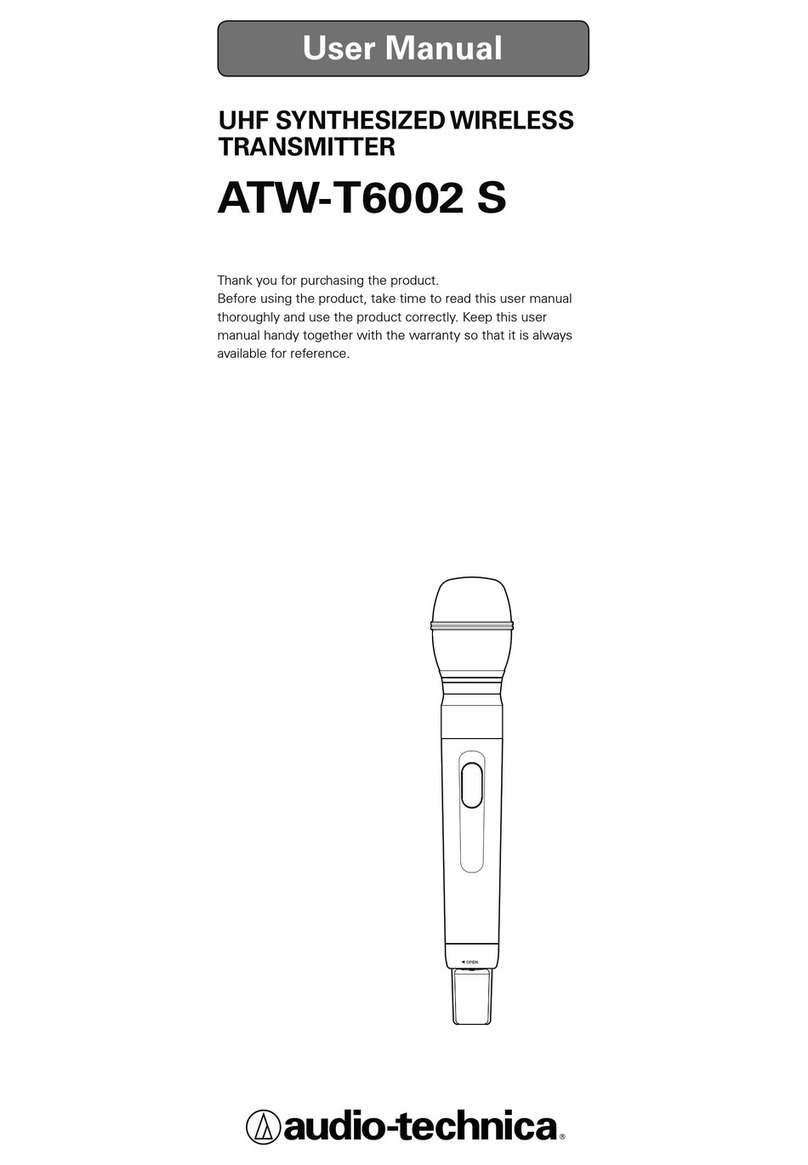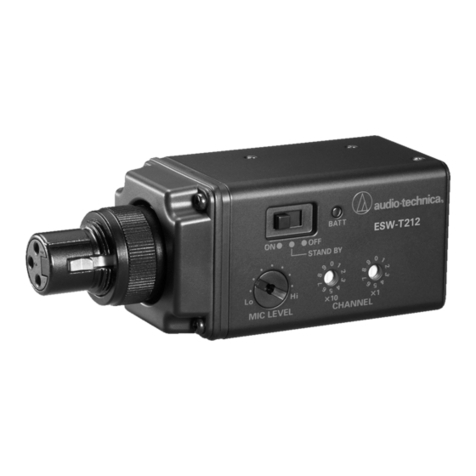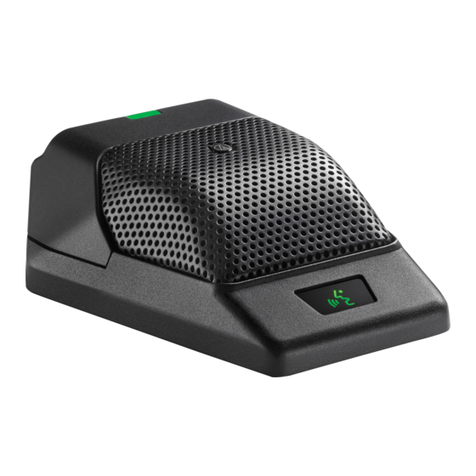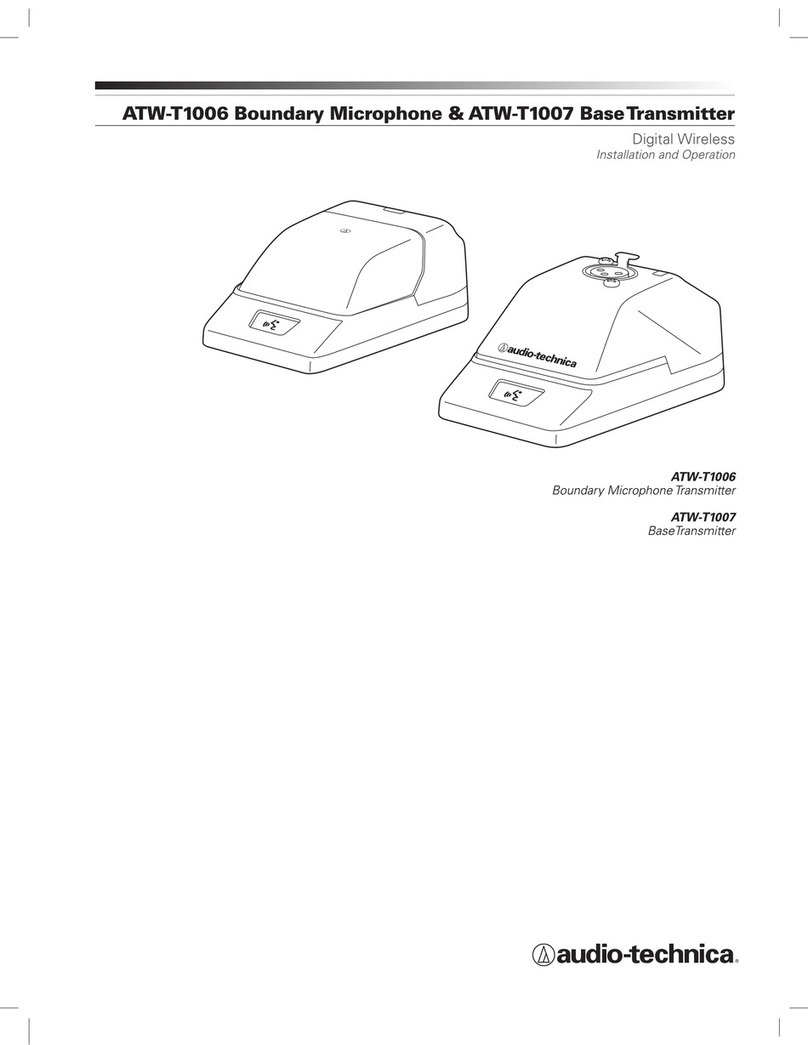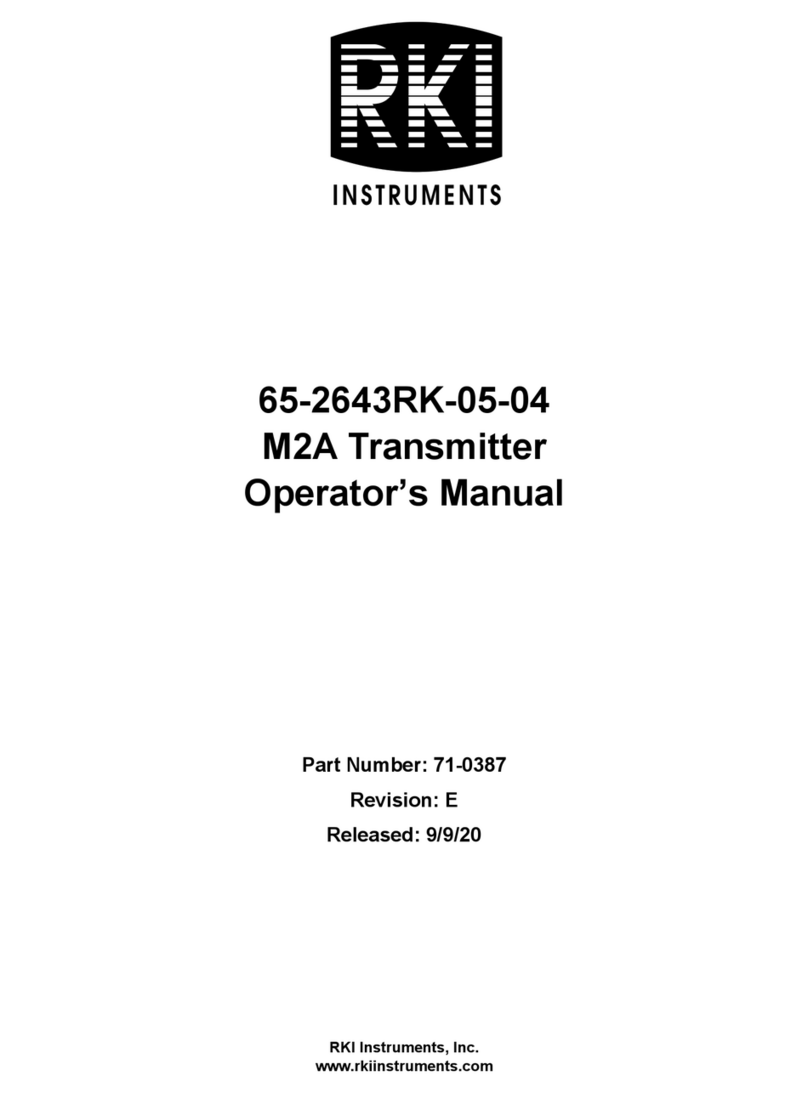
3
Turn down the mixer/amplifier level before starting
up the wireless system.
Switch on the receiver. Do
not
switch on the
transmitter yet.
Receiver On-
The Channel Designator Display will light. If any of the
RF LEDs light up at this point, there may be RF
interference in the area. If this occurs, select another
frequency using the front-panel channel selectors.
While holding in the "Set" button, press the "Up" or
"Down" button to access the desired frequency; then
release the Set button to select the channel.
Transmitter On-
Before turning on the transmitter , use the provided
screwdriver to set the transmitter channel selector
switches (Fig. F) to the same numbers as those dis-
played on the receiver. Always turn the transmitter off
when changing frequencies. When the transmitter is
switched on and in normal operation, the receiver's RF
signal level indicators will light up from left to right. For
optimum performance at least four, and preferably five,
of the signal strength indicators should light up when
the transmitter is switched on. One of the Tuner LEDs
(A or B) also will light up when the transmitter is on,
indicating that its signal has been received and the
receiver's Tone Lock squelch circuit has opened.
CH
System Operation
Fig. F
Setting Levels
Although Engineered Sound receivers require no level
adjustment, correct adjustment of transmitter audio
input and mixer/amplifier input and output levels is
important for optimum system performance.
The ATW-T94 handheld transmitter has a 0/-6/-12 dB
audio input Pad switch under the lower body cover. It is
factory pre-set at "0" for maximum audio input gain. If
four or five AF Level LEDs on the receiver illuminate
with maximum audio input, first try using the -6 dB
position. Extremely high audio input may require use
of the -12 dB setting. (Use the Pad switch only when
needed; excessive use will affect the maximum signal-
to-noise ratio of the system.)
1. Turn the transmitter on and power up the system.
2. Turn down the mixer' s input trim control (if provided)
on the selected channel; make an initial adjustment of
the mixer channel and output level controls that will
allow audio through the system.
3. While speaking/singing into the microphone at
typically-loud levels, adjust the mixer's input trim
control so the highest sound pressure level going into
the microphone causes no input overload in the mixer,
and yet permits the mixer' s level controls to operate in
their "normal" range (not set too high or too low).
RF Interference
Please note that wireless frequencies are shared with
other radio services. According to Federal
Communications Commission regulations, "Wireless
microphone operations are unprotected from interfer-
ence from other licensed operations in the band. If any
interference is received by any Government or non-
Government operation, the wireless microphone must
cease operation..."
If you need assistance with operation or frequency
selection, please contact your dealer.
Tips To Obtain The Best Results
- Use only fresh alkaline batteries. Do not use
"general purpose" (carbon-zinc) batteries.
- The transmitter and the receiver should be as
close together as conveniently possible, but
no closer together than three feet. Maintain
line-of-sight between them whenever
possible.
- Each transmitter/receiver pair must be set to
the same channel number.
- A single receiver cannot receive signals from
two transmitters at the same time.
- You need to change channels 1) when a
strong interference signal is received,
2) when the channel breaks down, or
3) during multiple-system operation
in order to select an interference-free channel.
- Turn the transmitter off when not in use.
Remove the batteries if the transmitter is not
to be used for a period of time.
Specifications
OVERALL SYSTEM
Operating Frequency UHF band, 800.550 to 819.700MHz
Number of Channels 100 total
Frequency Stability ±0.005%, Phase Lock Loop
frequency control
Modulation Mode FM
Normal Deviation ±5 kHz
Tone Squelch Frequency 32.768 kHz
Operating Range 90m typical
Operating Temperature Range 5C degree to 45C degree
Frequency Response 100 Hzto 15 kHz
ATW-T94 HANDHELD TRANSMITTER
RF Power Output 50 mW Max (H: 10 mW;
L: 5 mW, typical)
Spurious Emissions Under federal regulations
Microphone Element A-T Hi-ENERGY
¨dynamic,
unidirectional
Batteries Two 1.5V AA type alkaline,
not included
Current Consumption H: 105 mA; L: 95 mA, typical
Battery Life H: 16 hours; L: 18 hours,
typical (depending on battery
type and use pattern)
Dimensions 53.5 mm dia. x 239.0 mm long
Net Weight (without batteries) 295 grams
Accessory Included AT8456 stand clamp
Transmitter Accessories
AT8114 Foam windscreen for handheld transmitter.
AT8456 Stand clamp for handheld transmitter, 5/8"-27 threads.
